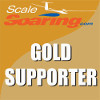This is my best GPS Triangle flight from the Sky High Aerotow in Muncy PA. Onboard footage, plus info from the log file, a quick introduction to GPS racing and commentary for the whole flight.
I learned a lot from doing this, hopefully others can too and maybe we can get more people excited about flying triangles.
I learned a lot from doing this, hopefully others can too and maybe we can get more people excited about flying triangles.




Comment